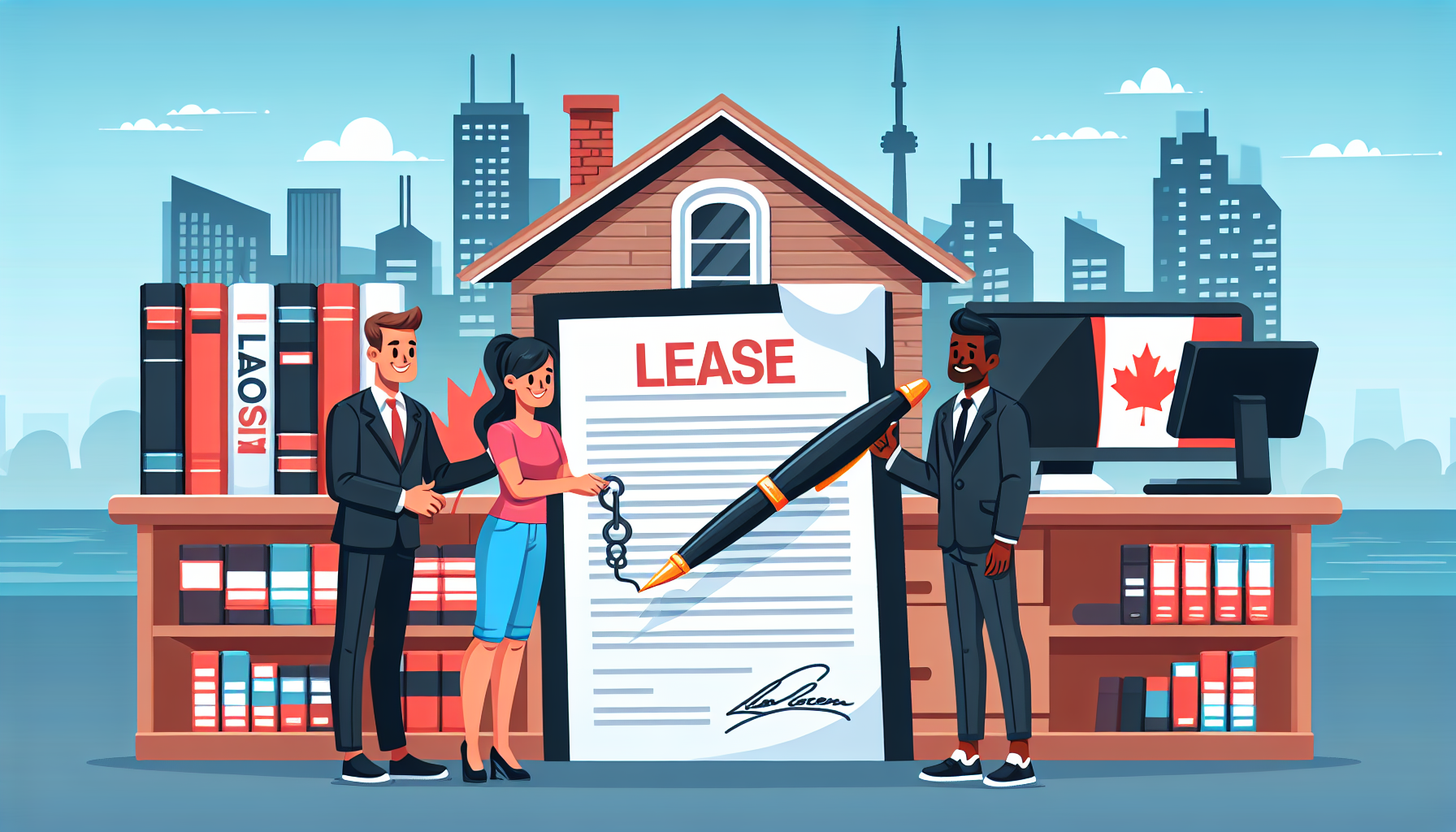 1. **Understand the Basics of a Residential Lease Agreement**
1. **Understand the Basics of a Residential Lease Agreement**Before you dive into the process of filing a lease, get comfortable with what a residential lease agreement entails. In Canada, and specifically in Toronto, a residential lease agreement is a legally binding contract between a landlord and tenant. This document outlines terms and conditions such as rent amount, duration of tenancy, and obligations of both parties.
2. **Know the Legal Framework**
Toronto landlords and tenants must adhere to the Residential Tenancies Act, 2006. It's crucial to familiarize yourself with this Act, as it sets forth the rules and responsibilities for both landlords and tenants. In Toronto, the Landlord and Tenant Board (LTB) is the governing body that enforces this legislation. Visit the LTB website to stay updated on any legislations or changes.
3. **Gather Necessary Information**
Compile the essential information required for the lease agreement:
- Full legal names of landlord(s) and tenant(s)
- Property address
- Rent amount and due date
- Duration of the lease (e.g., fixed-term or month-to-month)
- Security deposit details (first and last month’s rent)
- Any additional terms or conditions specific to the property
4. **Download the Standard Form of Lease**
In Toronto, the Ontario government mandates a standard form of lease for all residential properties, effective April 30, 2018. You can download this form from the Ontario government's website. This ensures that all agreements meet the minimum requirements and protects both parties' rights.
5. **Fill Out the Lease Form**
Carefully fill out the standard form of lease, ensuring all details are accurately noted. Here are specific sections you need to complete:
- **Part A: Important Information for Tenants:**
- Details about tenant insurance, maintenance responsibilities, and additional charges (if applicable).
- **Part B: General Information:**
- Information on how rent will be paid (e.g., cheque, e-transfer).
- **Part C: Rent and Other Payments:**
- Specify the rent amount, inclusions (utilities, parking), and any additional fees.
- **Part D: Services and Costs:**
- Indicate who pays for utilities (e.g., water, gas, electricity).
6. **Add Additional Terms**
The standard form of lease permits the inclusion of additional conditions provided they do not conflict with the Residential Tenancies Act. Examples include:
- Rules on smoking within the premises
- Pet policies
- Maintenance responsibilities
- Procedures for requesting repairs
7. **Review the Form with All Parties**
Ensure both the landlord and tenant review the completed lease agreement. It’s crucial that both parties fully understand and agree to all terms. If needed, seek legal advice from a certified paralegal or lawyer specialising in landlord-tenant law.
8. **Sign the Agreement**
Both parties must sign the lease agreement. The landlord must provide a copy of the signed lease to the tenant within 21 days of signing. Ensure that each party retains a copy for their records.
9. **Handle Deposit Payments**
According to the Residential Tenancies Act, landlords can request the first and last month’s rent as a deposit. Ensure these payments are processed securely and provide receipts for each. Note that in Toronto, interest must be paid on last month's rent deposit annually.
10. **Register the Lease (if necessary)**
In some cases, especially for long-term leases, you might need to register the lease agreement with local authorities or financial institutions. Consult your local municipal office or legal advisor for guidance if this applies to your situation.
11. **Provide Information to the Tenant**
As a landlord, you must supply tenants with contact information, including your full name, address, and an emergency contact number. This ensures tenants have a reliable way to reach you for urgent matters or routine communication.
12. **Move-in Inspection**
Schedule a move-in inspection with the tenant. Document the property’s condition, taking photos or videos if necessary, and have both parties sign off on this checklist. This serves as a reference in case of disputes over property condition at the end of the lease term.
13. **Handling Disputes**
Familiarize yourself with the dispute resolution process of the Landlord and Tenant Board. Common disputes include issues over rent, maintenance, and deposit returns. Filing applications and seeking mediation through the LTB are normal steps if conflicts arise.
14. **Adjusting Rent**
Understand the rules for increasing rent. In Ontario, annual rent increases are regulated and must comply with the guidelines set by the Ministry of Municipal Affairs and Housing. Provide tenants with a minimum of 90 days written notice for any rent increase using the prescribed form.
15. **Renewing or Ending the Lease**
For fixed-term leases, decide whether the lease will renew automatically on a month-to-month basis or whether a new lease period will be established. For non-renewal:
- Provide the tenant with notice according to the Residential Tenancies Act. Typically, a 60 days’ notice is required before the end of a lease term.
- For tenants, if you're deciding to move out, provide the landlord with the notice period specified in the lease agreement.
16. **Maintain Open Communication**
Maintain a communicative and professional relationship with tenants. Respond promptly to repair requests and ensure the property is kept in good condition. Regular communication can prevent minor issues from escalating into significant disputes.
17. **Stay Updated on Legal Changes**
Laws and regulations can frequently change. Stay updated on amendments to the Residential Tenancies Act and other legal requirements by subscribing to alerts from the Ontario Ministry of Municipal Affairs and Housing or consulting with a legal professional.
By following these detailed steps, you'll ensure that your residential lease agreement in Toronto is not only legally sound but also fair and transparent for all parties involved.

Comments
Post a Comment